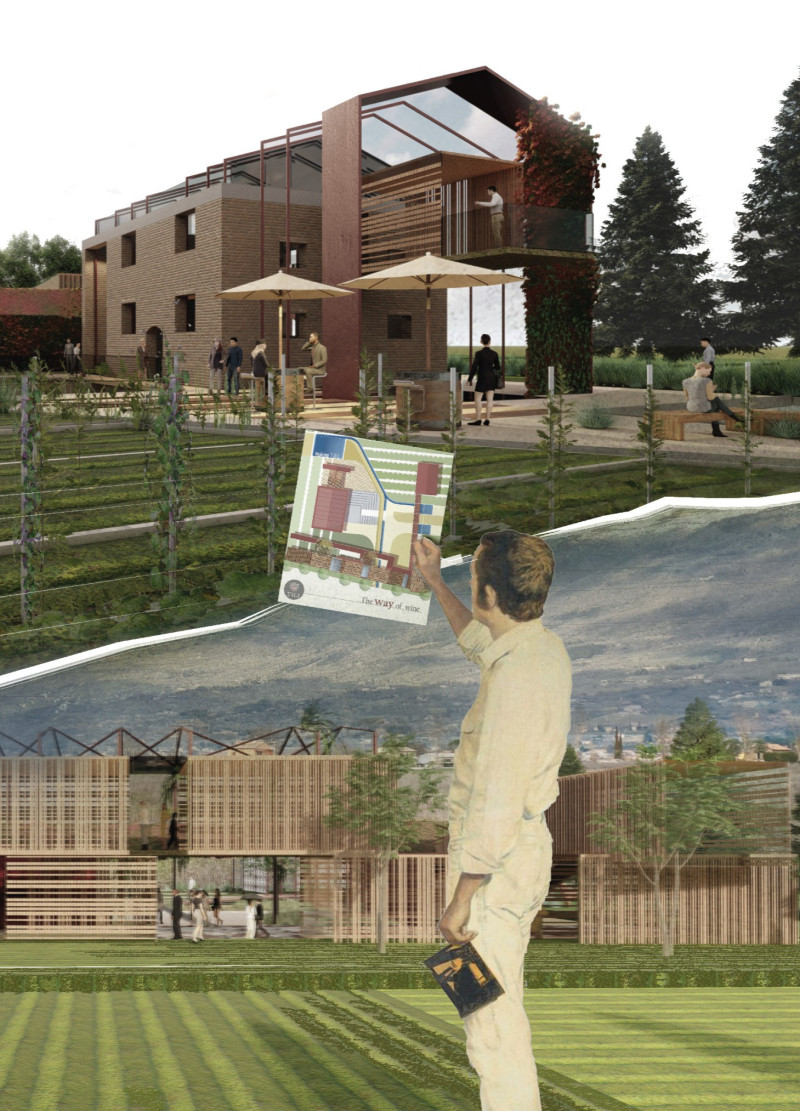5 key facts about this project
The TILI winery is set in an inviting landscape, designed to connect the processes of winemaking with visitor experiences. The concept allows guests to participate and learn about the various steps involved in producing wine. This approach emphasizes community among visitors while respecting the historical significance of the site.
Preservation and Integration
A key aspect of the TILI project is its focus on preserving existing buildings and agricultural structures. This method helps retain the site's historical character while adding modern functionality. The structures that remain remind all of the winery’s heritage, creating a link between its past and current operations.
Visitor Engagement
The layout includes a structured path that directs visitors through different winemaking stations. These stations offer hands-on experiences that deepen understanding of the process. Instead of just observing, guests can actively engage with the craft. This educational approach allows people to appreciate winemaking traditions more fully.
Spatial Composition
At the heart of the design is a central courtyard, which serves multiple purposes. This space is meant for community events and gatherings, enhancing social interactions. By functioning as a hub for activities, the courtyard enriches the overall experience for visitors, providing a lively atmosphere and opportunities for connection.
Guest Accommodations
The guest houses add to the unique design. Positioned among the grapevines, they offer distinct views of the vineyard. There are two types of guest units: one is accessible and spacious with private terraces, while the other is a two-level, multifunctional space. Both types aim to create a blend between indoor comfort and outdoor beauty, giving visitors a personal connection to the vineyard.
The wine tasting gallery, located in a preserved brick building, links visitors directly to the site’s history. This element enhances the experience by allowing people to appreciate the architecture and its story. Overall, the thoughtful integration of various design elements contributes to a cohesive narrative that highlights the rich traditions of winemaking.






















































